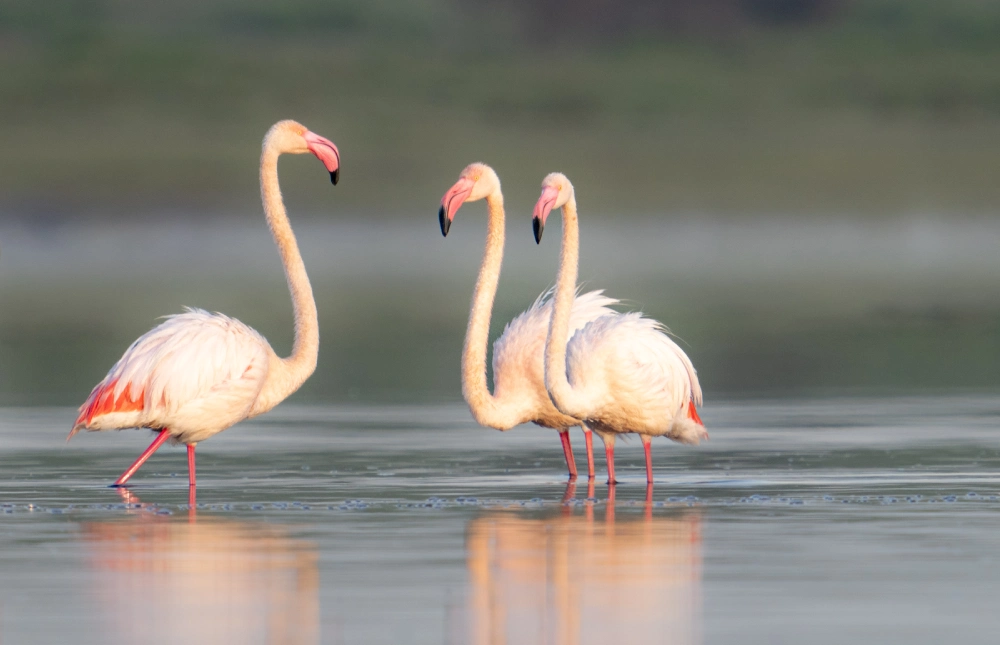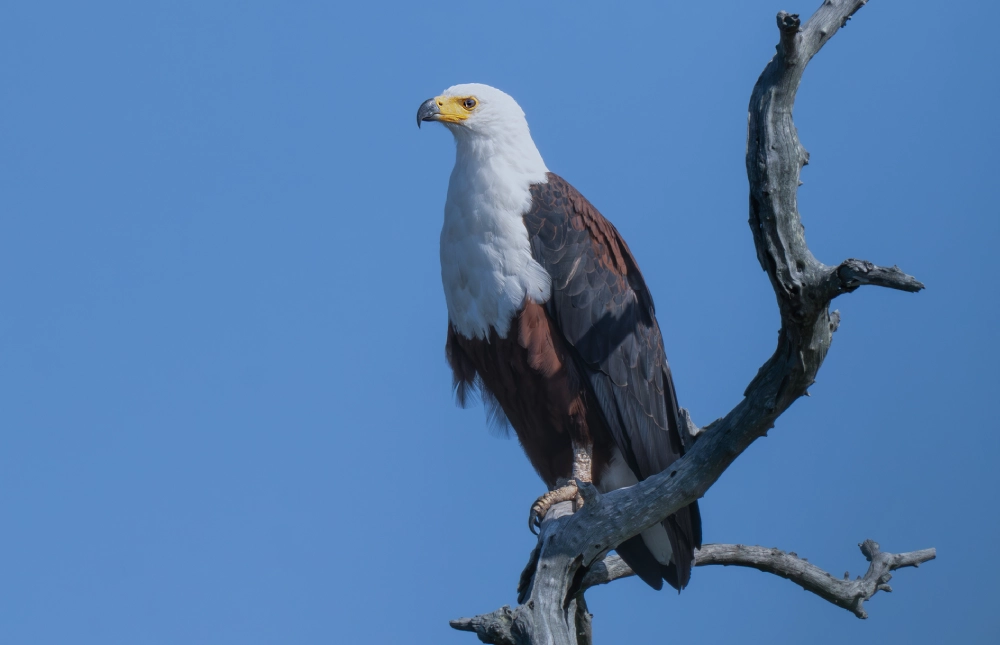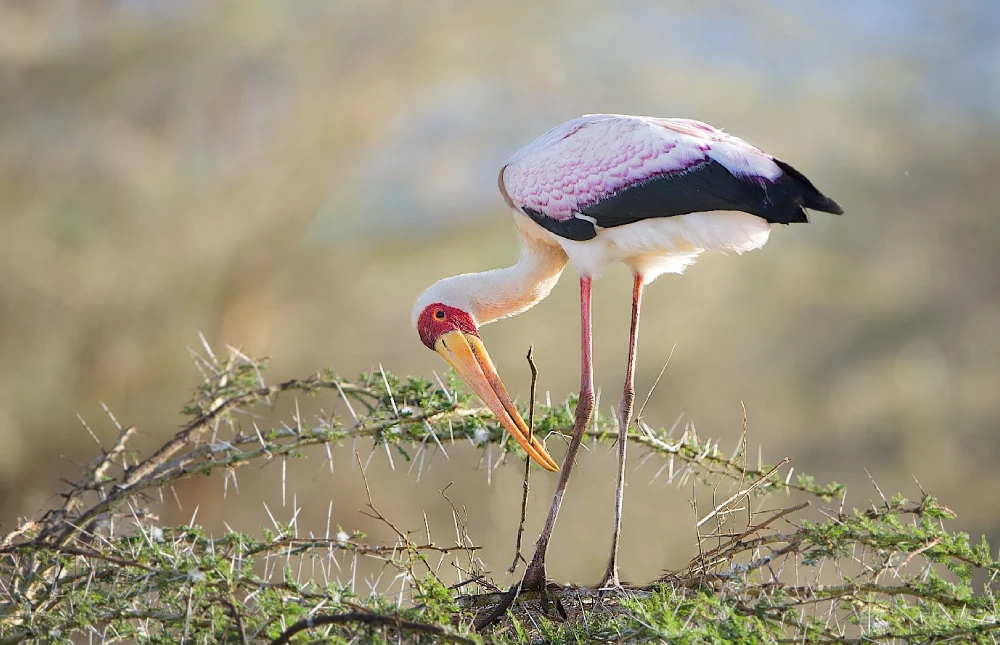You are here:
- Home
- Countries & Parks
- Lake Manyara National Park
Manyara Safari Tours
Overview
Wildlife
Birds
Best Time To Visit
Weather & Climate
Getting There
Malaria & Safety
Overview
Wildlife
Birds
Best Time
Climate
Getting There
Malaria & Safety

By Fadhili Mlema
Fadhili is a seasoned East African safari expert with 15 years of experience crafting luxurious and authentic journeys. Deeply rooted in the region, his passion for wildlife and tourism has shaped his unparalleled expertise. Let Fadhili curate your ultimate African adventure.
By Fadhili Mlema
Fadhili is a seasoned East African safari expert with 15 years of experience .
- Live Location

- View Photos

- Open Map
Best Time To Go
June to October offers the best chances to spot wildlife.
High Season
From July to March Crowds increase, especially in the northern section.
Size
330km² / 127mi²
Altitude
934-1,325m / 3,064-4,347ft
Although the rising water levels at Lake Manyara have altered the traditional game-drive routes, the park remains a prime destination for wildlife experiences. Visitors can still encounter four of the Big Five: buffaloes, elephants, giraffes, and zebras, along with wildebeests. For those with a keen eye, there’s also the chance to spot solitary bushbucks and agile klipspringers in their natural environments near the hot springs (Maji Moto).
Lake Manyara National Park, while compact, features an extraordinary range of habitats. The dense, evergreen groundwater forest, with its towering mahogany and fig trees, is a must-see. Other captivating landscapes include the grassy floodplain, rocky escarpment, and acacia woodland, all easily explored within a half-day. For a more immersive experience, a journey to the park’s hot springs (Maji Moto) is a highly recommended adventure.
The park enjoys comfortable temperatures year-round, making it an ideal destination for wildlife viewing. The weather is slightly cooler in the Dry season (June to October), with brisk mornings that call for a jacket during early game drives. During the Wet season (November to May), daytime temperatures usually reach around 28°C (82°F). This season features a brief dry period in January and February, followed by more rain from March to May.
Lake Manyara offers exceptional wildlife viewing year-round, with the Dry season (June to October)providing the best opportunities for sightings. Planning your visit outside these months is advisable to avoid the heavy rains of March and April. For those who appreciate scenic beauty, the Wet season (November to May)showcases the park’s lush, vibrant landscapes. Early mornings are perfect for a tranquil, less crowded experience, as many visitors pass through on their way to other destinations.
Lake Manyara National Park is a realm of wonder, famed for its legendary tree-climbing lions and elephants with majestic tusks. On its verdant plains, vast herds of buffalo, wildebeest, and zebra roam freely, embodying the wild spirit of Africa. The towering escarpment shelters a secretive population of leopards, whose sightings are rare and cherished, a true testament to nature’s mystery.
- Abundant
- Common
- Occasional
- Rare
- None
- Common
- Common
- Common
- Common
- Common
- Common
- Occasional
- Occasional
- Rare
- None
- None
- None
At the park’s entrance, a forest teems with olive baboons and blue monkeys, perfectly adapted to their lush surroundings. Occasionally, bushbucks dart into the shadows, adding a touch of mystery to the landscape. The delicate dik-diks, with their large, doe-like eyes and twitching noses, are delightful. In the rocky terrain of the southern edge, klipspringer pairs gracefully navigate the rugged cliffs, showcasing their remarkable agility.
Lake Manyara offers an unparalleled wildlife experience year-round, but the Dry season (June to October) is when the magic truly happens. As the landscape thins, animals converge around water sources, making encounters almost inevitable. Meanwhile, the Wet season (November to May) transforms the park into a lush paradise, though March and April bring the drama of heavy rains.

- View Photos
Notable Birds in Manyara Safari Tours





Lake Manyara is a birdwatcher’s paradise year-round, but the experience becomes truly extraordinary from November to April. During these months, the park is graced by various migratory birds from the Palearctic and intra-African regions, many adorned in their brilliant breeding plumage. This period offers a spectacle of colour and diversity that is simply unmatched. For those eager to explore beyond birdlife, the Dry season from June to October is ideal for wildlife viewing, as the conditions are most favourable.
Bird Species
400+
Migratory Birds
Nov to Apr
Jan
Feb
Mar
Apr
May
Jun
Jul
Aug
Sep
Oct
Nov
Dec
- Excellent
- Good
- Fair
- Poor
Lake Manyara National Park offers an unforgettable wildlife experience year-round, but the magic truly unfolds during the Dry season, from June to October. During these months, the park’s wildlife is most visible, gathering around water sources in a breathtaking display of nature. Yet, the Wet season, from November to May, transforms the park into a lush paradise, where vibrant greenery and cascading waterfalls create a scene of unparalleled beauty. However, be prepared for the intensity of March and April, when heavy rains add drama to the landscape.
Best Time
From June to October, wildlife sightings become almost guaranteed.
High Season
From July to March, the park's northern section comes alive and is often bustling with visitors.
Low Season
April and May
Best Weather
June to October (Clear skies, gentle breezes, and minimal rainfall create the perfect conditions).
Worst Weather
March and April (The heart of the Wet season, where heavy rains dominate).

- View Photos

By Fadhili Mlema
Fadhili is a seasoned East African safari expert with 15 years of experience crafting luxurious and authentic journeys. Deeply rooted in the region, his passion for wildlife and tourism has shaped his unparalleled expertise. Let Fadhili curate your ultimate African adventure.
Lake Manyara National Park enjoys a beautifully warm climate year-round, with rarely wavering temperatures. While extreme heat is uncommon, the evenings and early mornings bring a refreshing chill—perfect for those quiet game drives, but you’ll want to bring a cosy layer. From June to October, the Dry season offers clear skies and crisp air, while the Wet season unveils the park’s lush splendour. The rains are a symphony in two movements: the ‘short rains’ in November and December, followed by the long rains from March to May, with a brief pause in between. Yet even the rain is gentle, often giving way to moments of serene beauty.
Experience the brilliance of Lake Manyara’s Dry season, where the sun bathes the landscape in golden light and the skies stretch endlessly, unbroken by clouds.
- From June to September, the days are comfortably warm, with temperatures settling around 26°C (79°F). A refreshing coolness descends as evening falls, bringing temperatures down to 14°C (57°F)—perfect for a cosy wrap as you embark on early morning safaris.
- In October, the air carries whispers of change as the landscape prepares for the gentle arrival of the short rains, adding a new layer of beauty to this timeless wilderness.
In the Wet season, Lake Manyara comes alive with warmth, as days reach a pleasant 28°C (82°F) and nights cool to a refreshing 19°C (66°F).
- November & December: The ‘short rains’ arrive, gracing the afternoons with light, fleeting showers. These brief rains add a sparkle to the landscape without disrupting your plans.
- January & February: A brief, unpredictable dry spell offers a gentle pause between the rains, providing a unique blend of lush and dry scenery.
- March to May: The ‘long rains’ sweep in, bringing daily showers that seldom last all day. The sky often wears a cloak of clouds, adding a dramatic touch to the vibrant, rejuvenated earth.
- Live Location

- View Photos

By Fadhili Mlema
Fadhili is a seasoned East African safari expert with 15 years of experience crafting luxurious and authentic journeys. Deeply rooted in the region, his passion for wildlife and tourism has shaped his unparalleled expertise. Let Fadhili curate your ultimate African adventure.
Cradled within the legendary Northern safari circuit, Lake Manyara National Park is a must-visit destination, with Arusha serving as the gateway for adventurers. The most convenient way to reach Arusha is by flying into Kilimanjaro International Airport (JRO), just 50km (31 miles) from the town. Alternatively, you can fly into Julius Nyerere International Airport (DAR) in Dar es Salaam, with onward connections to Arusha Airport (ARK) or Kilimanjaro International Airport.
For those heading directly to Lake Manyara, flights are available from both Arusha and Serengeti National Park to the park’s airstrip, offering a seamless transition to your safari adventure. If you prefer to travel by road, a scenic 1.5-hour drive from Arusha will take you along smooth, paved roads straight to Lake Manyara.
If you’re coming from the iconic Ngorongoro Crater, a two-hour drive covering 80km (50 miles) will lead you through stunning landscapes to your destination.
- Main Park Location
Use Skyscanner for a comprehensive and detailed search to explore flight options and pricing for airlines serving Kilimanjaro International Airport (JRO) and Julius Nyerere International Airport (DAR).
Domestic Flights
As your tour operator, we typically handle the booking of domestic and charter flights between parks as part of your tour package. However, if you prefer to arrange your own flights to the Manyara National Park, several local carriers offer domestic options.
Auric Air (Flies to Manyara, Tarangire, Arusha Airport and Kilimanjaro Airport)
Coastal Aviation (Flies to Manyara, Tarangire, Arusha Airport and Kilimanjaro Airport)
Safari Air Link (Flies to Manyara, Arusha Airport and Kilimanjaro Airport)
Air Excel (Flies to Manyara, Arusha Airport and Kilimanjaro Airport)
Regional Air (Flies to Manyara, Arusha Airport and Kilimanjaro Airport)
Precision Air (Flies to Arusha Airport and Kilimanjaro Airport)
Flightlink (Flies to Arusha Airport and Kilimanjaro Airport)
Tropical Air (Flies to Arusha Airport and Kilimanjaro Airport)
As Salaam Air (Flies to Arusha Airport and Kilimanjaro Airport)
Please refer to our FAQ—Tanzania page for detailed information regarding passport, visa, vaccination, and other entry requirements.

By Fadhili Mlema
Fadhili is a seasoned East African safari expert with 15 years of experience crafting luxurious and authentic journeys. Deeply rooted in the region, his passion for wildlife and tourism has shaped his unparalleled expertise. Let Fadhili curate your ultimate African adventure.
Lake Manyara National Park welcomes countless visitors each year, offering a safe haven to experience its breathtaking wildlife. While the surrounding towns and cities may have some areas of concern, simple precautions ensure a smooth and secure experience when exploring urban centres (see ‘Cities & Urban Areas: Safety Precautions’ below). Thankfully, most travellers leave with nothing but memories of a safe and unforgettable adventure.
Before your trip, it’s advisable to update your vaccinations. Consult your healthcare provider or a travel health clinic for personalised guidance. Malaria prevention is also crucial. To minimise the risk of mosquito bites, use mosquito repellent containing DEET, take antimalarial medication, and wear long sleeves and pants in the evening.
Wildlife viewing in Lake Manyara National Park is exceptionally safe when you follow the expert guidance of your safari guide. Adhering to the park’s rules is crucial to ensuring safety and an awe-inspiring experience for those embarking on a self-drive adventure. Explore the ‘Wildlife Viewing Safety Precautions’ section below for more insights and safety tips.
Discover Lake Manyara Safari Tours
to
pp (USD)
Tanzania:
Private tour,
Luxury +,
- 13 days
- 7 places
to
pp (USD)
Tanzania:
Private tour,
Luxury +,
- 13 days
- 7 places
to
pp (USD)
Tanzania:
Private tour,
Luxury,
- 10 days
- 5 places




